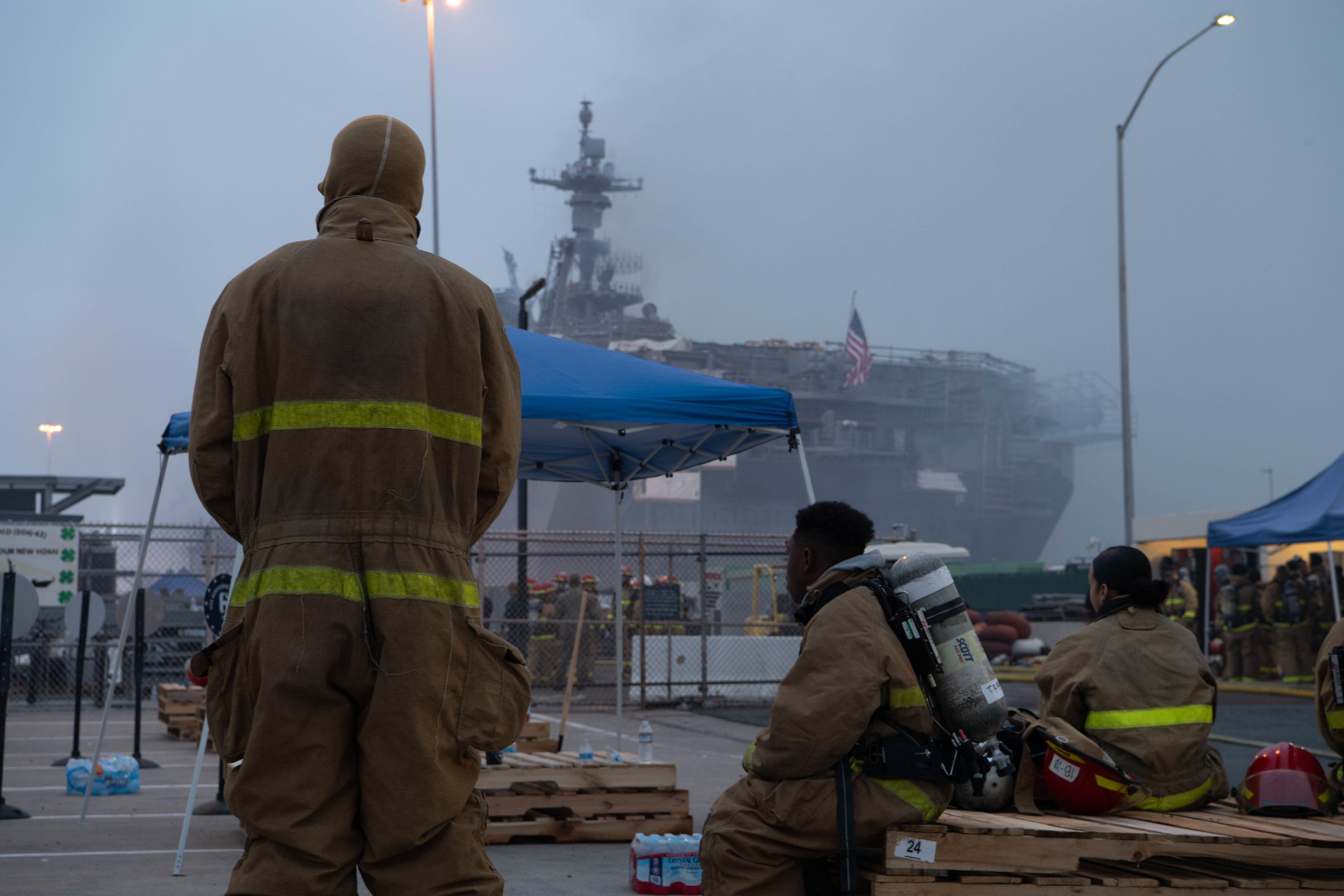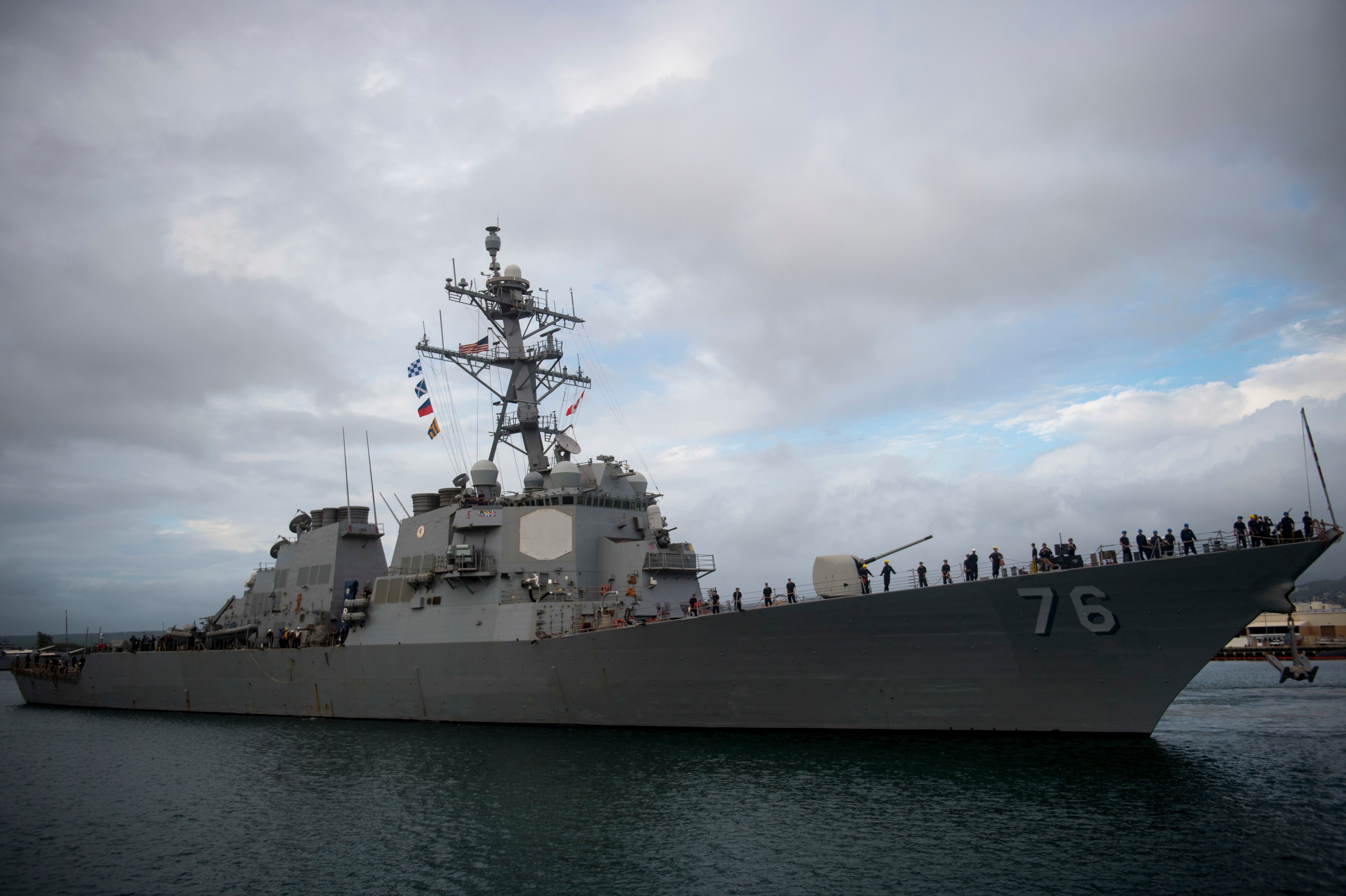
This story has been updated to clarify that the Navy made the decision to scrap the former USS Bonhomme Richard (LHD-6) last year, not earlier this year.
SAN DIEGO, Calif. – Navy prosecutors will make their case to a military officer this week as to why a junior sailor should be court-martialed on charges that he deliberately set the 2020 fire that eventually gutted the former USS Bonhomme Richard (LHD-6) and intentionally put others in danger at Naval Base San Diego.
Seaman Apprentice Ryan S. Mays is charged with willful hazarding of a vessel, a violation of Article 110 under the Uniform Code of Military Justice, in that he allegedly did “willfully and wrongfully hazard” to the amphibious assault ship “by setting a fire aboard the vessel” on July 12, 2020, according to a copy of the charge sheet released by U.S. 3rd Fleet officials.
He also is charged with aggravated arson, a violation of Article 126, in that “while serving as deck crewman aboard” Bonhomme Richard, he allegedly “willfully and maliciously set on fire, knowing that a human being was therein at the time,” the amphibious warship, according to the charge sheet.
The preliminary hearing was ordered by Vice Adm. Stephen Koehler, the U.S. 3rd Fleet commander, who as the convening authority in the case had approved the criminal charges issued July 29, 2021, by Expeditionary Strike Group 3.
The Article 32 hearing, as it’s known, begins Monday morning in a courtroom just blocks away from the site of the fire at Pier 2 and is expected to last two or three days.
The preliminary hearing officer will collect testimony and evidence and then make a recommendation to Koehler as to whether the charges against Mays, who enlisted in May 2019, should be sent to a court-martial, handled administratively or be dismissed.
Under the Manual for Courts-Martial, if Mays is court-martialed and found guilty of hazarding a vessel, he would face punishment up to “death or other such punishment as a court-martial may direct.” The maximum punishment for aggravated arson is 20 years in prison, a dishonorable discharge and forfeiture of all pay and allowances.
The fire that was reported just before 8 a.m. in the ship’s lower vehicle stowage area spread quickly into a conflagration that spread across nearly every level of the big-deck amphibious ship and burned for nearly five days. It consumed living and work spaces, decimated the ship’s superstructure and destroyed most of the ship’s combat systems.
Several dozen sailors and firefighters were injured or treated for smoke inhalation during the massive firefighting effort.
Despite initially pouring millions into salvaging and repairing the ship, the Navy last year made the decision to scrap the ship, ending its operational service after just two decades.
Bonhomme Richard was wrapping up a nearly two-year, $249 million maintenance overhaul when the fire broke out on that Sunday morning. It came during a weekend when the first groups of sailors began moving back onto the ship after living aboard a nearby berthing barge during the maintenance period.
Mays was among 177 crew members initially questioned by investigators looking into the cause of the fire, according to a federal search warrant requested by the Naval Criminal Investigative Service and issued in September 2020 for his email and cellphone accounts. On Aug. 20, 2020, he was detained and put into pretrial confinement at the Consolidated Military Brig in San Diego, but was released on Oct. 14, 2020, without any criminal charges levied against him. He resumed working at an assignment with Amphibious Squadron 5 in San Diego.
Koehler took command of 3rd Fleet in early June, replacing Vice Adm. Scott Conn, who had overseen the the initial probes.
The Navy’s official investigation blamed the fire and extensive damage on a cascade of failures that began when junior enlisted sailors didn’t recognize a fire that warranted immediate action. The investigation also revealed significant, fundamental problems with the Navy’s firefighting training aboard ship and at shipyards.





